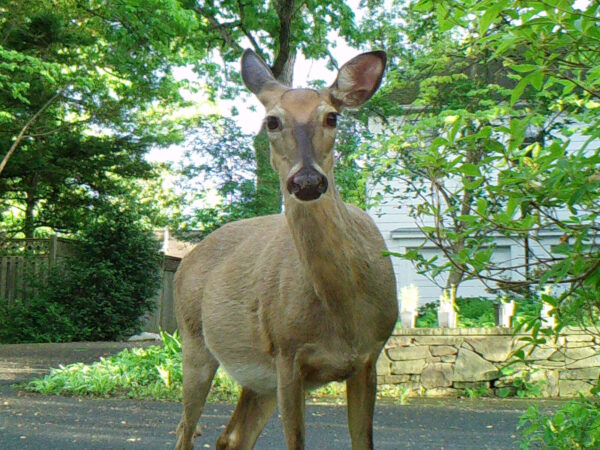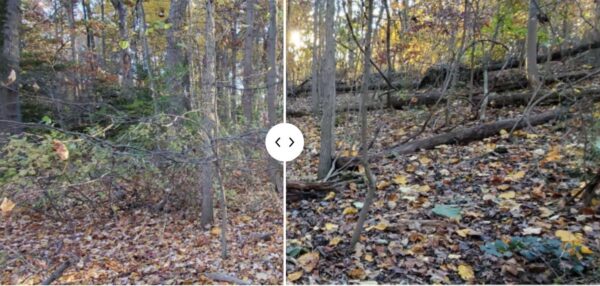
Has your garden been damaged by hungry deer?
Local master gardeners with the Virginia Cooperative Extension Master Gardeners of Arlington and Alexandria City program are asking residents to fill out an anonymous survey about the impact of deer on private property.
“Information gathered will assist Extension Master Gardeners as they interact with the public on landscape management, urban agriculture education and future outreach programs,” per a release, adding that the survey will be open until March 30 and results available in April.
Meanwhile, this evening (Wednesday), the association of master gardeners, the Arlington Regional Master Naturalists (ARMN), and others, are sponsoring a webinar with a professor who will discuss ways to address Arlington’s reported deer overpopulation issue.
“Deer are charismatic native species that belong in our fields and forests,” Cornell University professor Bernd Blossey said in a statement. “Humans have allowed them to become ecological bullies, and if we are serious about our responsibilities to protect all native species, we need to embrace the need to reduce deer impacts through reductions in the local deer herds.”

The groups hosting the survey and webinar are sounding the alarm on the impacts of deer, including the loss of understory foliage, and saying their current efforts — like protecting native plants with deer-proof cages — are not enough.
“Our suburban forests are dominated by a few native species that deer don’t find appetizing, like Spicebush and Pawpaws, and lots of harmful exotic invasive plants that deer won’t eat,” per ARMN’s website. “Early attempts at habitat restoration were frustrated when overabundant deer devoured the large native plantings.”
The study and webinar come about six months after a wildlife consultant began working with the county to determine if Arlington’s natural lands can support the current deer population and whether the county needs to step up management.
Prior to this, the county had its deer population counted by drone and a report summarizing what the drone recorded found parts of Arlington had populations of 20-39 deer per square mile, which it said was “unhealthy.”
But not everyone agrees with this assessment. Arlington County’s animal control group, the Animal Welfare League of Arlington (AWLA), maintains that the issue is not the number but how humans interact with them.
“Many conflicts with deer in our gardens are a result of planting ornamental non-native plants that are irresistible to deer,” Chief of Animal Control Jennifer Toussaint said in a statement to ARLnow.
“Deer will always seek out tasty hostas and tulips first, regardless of the amount of deer present,” she continued. “The best way to mitigate deer eating from your yard is to plant deer-resistant plant species, erect fencing, and utilize repellents. One or a combination of these techniques is an effective and humane way to co-exist with deer.”
Toussaint said AWLA is working with the county throughout the deer study.
“Any Arlington County citizens that have wildlife management issues can continue to reach out directly to AWLA’s Animal Control team for these concerns,” she said, noting that last year, animal control oversaw 2,351 wildlife cases, from squirrels in attics to deer concerns.
Meanwhile, the county’s wildlife consultant, White Buffalo, is wrapping up the first phase of its deer assessment, says Dept. of Parks and Recreation spokeswoman Martha Holland.
White Buffalo, which she described as “a well-regarded wildlife management and research organization with regional experience in deer management assessment,” surveyed the impacts on vegetation, reviewed scientific literature and consulted with nearby jurisdictions.
The firm will “investigate and address the potential need for active white-tailed deer management in County-owned natural land parks, some of which fall within Natural Resource Conservation Areas,” she said.
In the next of three phases, the group will list possible management strategies and engage the community, she said. It will then present to the county both draft management recommendations and a monitoring program.
That could happen later this year, according to the county’s website.

